
The global authority in superyachting
- NEWSLETTERS
- Yachts Home
- The Superyacht Directory
- Yacht Reports
- Brokerage News
- The largest yachts in the world
- The Register
- Yacht Advice
- Yacht Design
- 12m to 24m yachts
- Monaco Yacht Show
- Builder Directory
- Designer Directory
- Interior Design Directory
- Naval Architect Directory
- Yachts for sale home
- Motor yachts
- Sailing yachts
- Explorer yachts
- Classic yachts
- Sale Broker Directory
- Charter Home
- Yachts for Charter
- Charter Destinations
- Charter Broker Directory
- Destinations Home
- Mediterranean
- South Pacific
- Rest of the World
- Boat Life Home
- Owners' Experiences
- Conservation and Philanthropy
- Interiors Suppliers
- Owners' Club
- Captains' Club
- BOAT Showcase
- Boat Presents
- Events Home
- World Superyacht Awards
- Superyacht Design Festival
- Design and Innovation Awards
- Young Designer of the Year Award
- Artistry and Craft Awards
- Explorer Yachts Summit
- Ocean Talks
- The Ocean Awards
- BOAT Connect
- Between the bays
- Golf Invitational
- BOATPro Home
- Superyacht Insight
- Global Order Book
- Premium Content
- Product Features
- Testimonials
- Pricing Plan
- Tenders & Equipment


The golden rules of yacht design
As nominations continue for the Design & Innovation Awards , BOAT speaks to the experts about what they consider to be the principles of good yacht design and the favourite projects they've worked on. Designing a luxury yacht is no mean feat and, whether the designer is tasked with a boundary-pushing exterior or an interior that can stand the test of time, designers must unleash their creativity time and time again. With practice comes a design team's best practices, resulting in some of the top modern yacht designs we see today.
But even the most established designers have battled obstacles and learnt lessons the hard way – especially when it comes to meeting a client's wishes. We talk to the industry's key names...
Enrico Lumini
Studio: Hot Lab
What is your number one guiding principle when it comes to yacht design? A good design needs first to be supported by a good idea. There must be thought behind it, especially when it comes to yacht design, which is a perfect mix of product design and architecture. Then a design needs to be “obvious” and, by that, I mean that it needs to look “naturally beautiful”. It cannot be something to be understood or interpreted, it just needs to strike your eyes at first glance. So, whenever I am tempted to add more lines or more surfaces, then I understand that the design is complete – when you feel the need to add something it means either you are designing unnecessary details or that you are trying to hide the lack of ideas with those details.
What’s the best lesson you’ve learned in yacht design? To understand clients’ non-verbalised requests. Doing this job, you get to know different kinds of people – most of them with very strong personalities. One thing they all have in common is to expect that you understand their needs, whether they tell you directly or not. Sometimes they have a precise idea in mind but do not know how to express it; other times they only have a partial idea of what to expect. You need to fill that gap.
Yacht design involves several necessary soft skills which are usually underestimated, but crucial to keep your clients satisfied and happy along the process. This can mean being available to jump on a private plane and have a meeting during the flight or understanding from a wool coat thrown on a table what the material moodboard of the vessel is going to be like.
What is your favourite design you’ve ever worked on and why? It probably is the 80-metre concept design during Covid time for a north European shipyard. During that moment, the unexpected quantity of time we had allowed us to concentrate a bit more on the ideas and less on production and, for this reason, something extraordinary came out. Our new approach to design – cleaner, smoother and simpler – was born with that concept and this is why it is still my favourite one.
Marnix J. Hoekstra
Studio: Vripack
What is your number one guiding principle when it comes to yacht design? Good yacht design only exists when underpinned by great naval architecture.
What’s the best lesson you’ve learned in yacht design? Become a good listener. You've got to ask "why?" five times to get to the root cause of [a problem]. This is ultimately how we, as part of the bigger team, solved the energy puzzle for Project Zero . We couldn't get the yacht to work only on electrical energy and by continuing to ask why that was over and over again, the answer was found in splitting the energy into electrical and thermal. That essentially led to being able to now have in build the world's first fossil-fuel-free yacht.
What is your favourite design you’ve ever worked on and why? Honestly, I have many and learned that the ones that hurt the most when creating often turn out the best. Friction in the team between style and technology, unhappy clients and particularly my conscience telling me there's space for something better and more fitting for the client's deeper needs turns out to be an amazing catalyst to keep on drawing, calculating, researching and getting into that state-of-mind where the solution appears by itself. It's that flow I would love to live in forever.
Studio: Winch Design
What is your number one guiding principle when it comes to yacht design? We believe in comfort, adventure and possibility, in freedom of exploration and freedom of vision. Winch Design has developed a design philosophy that is unconstrained by a "house style" – but instead is a reflection of the client and their character. Each project is unique, and we take pride in having no "one size fits all" approach to design. The studios are relentlessly creative, and we are dedicated to finding solutions to unprecedented challenges, be it on a grand, breathtaking superyacht or a pared-back, contemporary sailing yacht. Our clients are often as much a part of the design process as our teams are. We believe that the experience of designing the project is as important as the project itself, and they need to enjoy every moment with us.
What’s the best lesson you’ve learned in yacht design? Incredible feats can be achieved by pushing the boundaries of design further than you might initially think possible. One of the best examples of this from the Winch Design studio is 80-metre Excellence . Excellence is a remarkable feat of ingenuity with her unique superstructure, advanced technical design and daring innovation. Her razor-sharp bow swooping back a full 10 metres before joining the line of the main deck set a new standard and required Abeking & Rasmussen to spend many long hours perfecting and tank testing the naval architecture.
What is your favourite design you’ve ever worked on and why? It is very hard to pick a favourite as I have worked on so many incredible projects over the years. One of the most interesting projects we are currently working on is the Flexplorer 146 , a 44-metre explorer yacht with Cantiere delle Marche due for delivery in 2025.
The owner and his young family have a deep commitment to nature and sustainability and the interior will therefore be crafted using eco-friendly materials. The family plans to spend a large amount of time on the yacht and have a real interest in healthy, sustainable living. The interior will favour practices that create low levels of EMF and non-toxic materials with low VOCs to deliver a clean living environment.
Laura Pomponi
Studio: Luxury Projects
What is your number one guiding principle when it comes to yacht design? Place the client at the heart of every project and operate with the highest level of integrity. That’s Luxury Projects' golden rule. We give everything and perform to the best of our abilities to fulfil and honour our commitments. The studio follows every step of the design and construction, from concept to completion. Another very important aspect is that the clients have to find the design process as enjoyable as possible.
What’s the best lesson you’ve learned in yacht design? The best lesson we’ve learned is to always stick to our golden rule. We also make sure that every design, concept, innovation and invention is feasible. This latest lesson implied that the studio had to acquire further and further technical skills and field experience to make sure of it. Back in our very early days, I spent a fair amount of time crawling into holes and hidden corners of a yacht to know the spaces and system to the millimetre. Not to mention the merry times spent with joiners, cabinetmakers, carvers and furniture makers. We still do that, by the way, to gain fundamental first-hand knowledge on how a yacht is built. And there are thousands of lessons to be learnt from craftsmen and artisans who, in many cases, are true artists.
What is your favourite design you’ve ever worked on and why? Difficult to pick as each project is a piece of our heart. But if we really have to, then as far as new builds, I would say 70-metre Alfa and 60-metre Moonstone as both projects come from a truly holistic design concept. As far as refit: 90-metre Nero for the technical challenges, but also 38-metre Destiny . In this latest case, one of the main challenges was to work within a very tight schedule and a budget set prior to the definition of the project.
Enrico Gobbi
Studio: Team for Design
What is your number one guiding principle when it comes to yacht design? The main guidelines for me are the proportions of the project and this is true both for exterior design and interior design. They are two different yet close worlds and, especially in yacht design, they must be in synergy. When we begin a project from blank, the first character lines we trace need to be well-proportioned, otherwise, the project won't work. For interiors, we pursue a perfect balance of shapes, colours and volumes – all of which are fundamental before drilling into details.
What’s the best lesson you’ve learned in yacht design? The best lesson I learnt was from the time the owners of a yacht designed by us invited us to spend time on board. It allowed me to understand perfectly how important the nautical aspects are in a yacht project, where it's desirable to have a 'wow' interior while keeping in mind the seaworthiness, also in large superyachts 70 metres and above. The yacht is an architecture that moves, and having the opportunity to live it was probably the first important lesson.
What is your favourite design you’ve ever worked on and why? I don't have a single favourite design, but one of the yachts that gave me major satisfaction was Utopia IV , one of the fastest superyachts in the world. In this project, we were challenged to keep the yacht as light as possible in order not to compromise her performance, yet at the same time making her elegant and luxurious. The aim was also to make this yacht extremely sleek, aerodynamic and automotive-inspired, with a dynamic appeal even when still.
Studio: Espen Øino International
What is your number one guiding principle when it comes to yacht design? Defining a clear, unambiguous brief with the client and/or his or her’s representative(s) before starting designing.
What’s the best lesson you’ve learned in yacht design? Never be afraid of questioning established principles in design, construction and/or operations.
What is your favourite design you’ve ever worked on and why? Ha – always the last one, or perhaps the next one.
Mario Pedol
Studio: Nauta D esign
What’s the best lesson you’ve learned in yacht design? It's difficult to say what is the best, but one that I learned in my very early years was during a six-month apprenticeship at Scott Kaufman's studio in Manhattan. At the time, Scott was one of the leading naval architects and sailing yacht designers – designing impeccably beautiful yachts. He had to combine aesthetics and function – in his case being a specialist in racing yachts – considering performance and an appealing look to the yachts.
What is your favourite design you’ve ever worked on and why? My favourite design that I've worked on was particularly interesting and challenging as it was my first experience in the big motor yacht world. I'm talking about the 80-metre Project Light with Fincantieri Yachts , who did the full engineering. It anticipated the future and what is now, 15 years later, starting to become the general trend and a different way of living on a yacht that size. We completely changed the ratio between outdoor and inside areas, creating a more direct, seamless connection between the two and emphasising the blend into the environment around the yacht. This meant also a completely different distribution of volumes in the superstructure, much more centred than the existing fleet of the time.One of the most appreciated compliments I ever had in my career was during a boat show when an American client, who was admiring this project, said: "This yacht could've been designed by Frank Lloyd Wright". This for me was really "wow". I was really happy about it, of course.
Francesca Muzio
Studio: FM Architettura
What is your number one guiding principle when it comes to yacht design? I have two principles that in my view drive any of our projects whether it be a yacht, home, or anything else. One: listen to your client's wishes, dreams, and needs. Two: Personal, beauty and cosiness. A yacht project must be personal and needs to reflect the personality of the owners and their families.
What’s the best lesson you’ve learned in yacht design? At the beginning of my career in yachting, I was under the impression that many things were not possible at a balanced price. I thought that everything was extremely expensive, the box of yacht design was full of limits, and that there were no possible solutions.
One time an elder Lebanese client taught me that anything was possible and my job was not only to design but to find practical solutions that could satisfy his wishes, without losing sight of budget. I accepted the challenge. I started to study how a yacht was built. I dressed in blue overalls and I started to speak with every worker, every engineer and every supplier, collecting any pieces of information and data to create the deepest knowledge possible. I have now built several vessels for this gentleman.
What is your favourite design you’ve ever worked on and why? At the end of the day, there is no all-time favourite, there are certain projects that pushed us to change our paradigms and our strong beliefs. Lately, we have been developing a project and every time we have presented the initial proposal the client requested to simplify and reduce details. We went back to the drawing board. We had to research Japanese, Swedish, and Italian Architecture and create a new language for our design. When we made the new presentation, the client had a sparkle in their eyes and I realised that we had exceeded their expectations.
Nominations for the Design & Innovation Awards 2025 are now open and will close on 11 October 2024. The winners will be announced at the Superyacht Design Festival 2025 in Kitzbühel.
Sign up to BOAT Briefing email
Latest news, brokerage headlines and yacht exclusives, every weekday
By signing up for BOAT newsletters, you agree to our Terms of Use and our Privacy Policy .
More stories
Most popular, from our partners, sponsored listings.

LEARN YACHT DESIGN
Westlawn's mission.
The Westlawn Institute of Marine Technology operates around one central goal:
Enabling our students and alumni to achieve their dreams of becoming successful yacht designers.
Westlawn Opens Doors
Over the years, Westlawn has produced more practicing small-craft designers than any other institution in the world.
Westlawn graduates have established careers throughout the marine industry, with leading builders and design firms. Many have launched their own independent design firms.
The Westlawn Diploma in Naval Architecture, Marine Engineering, and Yacht Design demonstrates the graduate’s mastery of concept and design skills. Equally important to prospective clients and employers, it offers proof of superior self-discipline and dedication, for a powerful competitive advantage in the global marine industry.
Many Westlawn graduates report that their portfolios of design projects from the Westlawn course have been a primary factor in securing employment with leading boatbuilders and design firms. Employers add that Westlawn students’ learning is practical, relevant and up-to-date, allowing them to begin contributing immediately as productive team members.
Many Westlawn students have completed their studies after being hired as designers in many industries.
Who Should Consider Westlawn
Recent high school graduates choose Westlawn as the next step in their education, leading directly to a yacht and boat design career.
College and university students earning degrees in naval architecture and marine engineering find that Westlawn provides skills in boat design not covered in university courses, as well as training in conceptualization and aesthetics.
Many Westlawn students have already established careers in other disciplines, and seek to change their professional direction. Others, already working as designers in the marine industry, select Westlawn as a path to professional development and career enhancement.
So if you have an interest in boats and a desire to flex your creative muscle in marine design, the Westlawn Institute of Marine Technology is for you.
A Westlawn Education Is Effective, Convenient, And Affordable
To help you achieve your professional dreams, we’ve made it easier than ever to complete your Westlawn education.
Your monthly student fee covers your student membership in the two professional organizations that will be very important to your career as a yacht designer: RINA, the Royal Institution of Naval Architects, and SNAME, the Society of Naval Architects and Marine Engineers. These two organizations provide you with periodicals and access to an enormous library of valuable reference materials.
Because tuition and enrollment fees include all text materials, software tools, assignment review and evaluation, testing, grading and consultation with faculty, the cost of a Westlawn education represents a superior value.
Practical, Project Based Learning
Our courses are online, and have always been based on “Project Based Learning” which is widely recognized as the most effective way to learn: As a Westlawn student you will learn knowledge and skills, and immediately apply your skills on practical yacht designs.
Project Based Learning enables you to internalize and retain the knowledge and skills, as you use the tools and processes used in professional yacht design firms.
Select Westlawn students also have the opportunity to collaborate on Superyacht designs at Art Center College of Design, in Pasadena California.
By the time you graduate, your portfolio of professional quality design work will include nine designs of yachts engineered in aluminum, fiberglass, and wood, both sail and power.
This realistic and practical education means you will have the confident ability to design yachts for clients upon graduation.
The Yacht Design and Naval Architecture Course
A comprehensive four-module professional education, the Westlawn Yacht Design & Naval Architecture course enables you to master the principles of yacht design using industry standard tools, including Rhino3d and AutoCAD.
During this course, you will prepare plans, computations, specifications and all the details for nine different boat designs. You will design both powerboats and sailboats. You will follow the practices of successful yacht design firms.
Your nine different designs will be critiqued by the Westlawn faculty of professional yacht designers, and will provide you with a portfolio of your own designs to help you start your career.
Module 1: Principles of Yacht Design
Introduction to design process; Fundamentals of statics and dynamics and their influence on design.
Module 2: Aesthetics and Layouts
Elements of exterior and interior design of powerboats, monohull sailboats and multihulls, using Rhino and Autodesk tools such as AutoCAD.
Module 3: Construction Methods
A detailed study of manufacturing technologies, materials and processes for wood, fiberglass and aluminum production.
Module 4: Systems and Equipment
Design considerations and issues relating to engine installations, propulsion, electrical, navigation, plumbing, fuel and environmental systems.
When you satisfactorily complete all four modules, you will graduate and be awarded the Diploma in Yacht Design, Naval Architecture, and Marine Engineering.
Admission Requirements
The Yacht Design & Naval Architecture course is a comprehensive and rigorous course. You should be prepared and mature enough for a college education. There are no specific prerequisites, other than self motivation and discipline.
You need a Mac or PC with internet access and email to enroll and to do the coursework.
Work at your own pace
You may start the Westlawn course at any time.
The entire Yacht Design & Naval Architecture course requires about 3,200 hours of study and assignment preparation, or about 1 to 3 hours a day to complete the course in 4 years.
Westlawn is a work-at-your-own-pace school. Some complete in as little as two years, others may take a decade. It is common for our students to obtain gainful employment as designers of yachts, cars, airplanes, products, and interiors early in their education at Westlawn.
Tuition and Fees
$4600 per module for tuition, and $100 enrollment fee per month. Therefore, the total 4 module course will cost about $23,200 if completed in 4 years.
Everything is Included
Your tuition and enrollment fees includes all books and full versions of all software from Autodesk, including AutoCAD, Alias, Maya, Inventor. Deep discounts on Rhino and Orca3d are also available to our students.
Making waves for 90 years
Since 1930, Westlawn has set the standard for yacht design education. Over the years, our alumni continue to lead the marine industry in setting the tone for style throughout the industry, including sailing and power yachts and commercial vessels.
For example, alumnus Jack Hargrave gave us the now pervasive style of sport fishing boats with long fordecks and wide and low cockpits.
Alumni Andrej Justin, Tom Fexas, Bruce King, Gerry Douglas, Roger Martin, Dudley Dix, John Swarbrick, Doug Zurn, Rod Johnstone, and many others have designed large numbers of beautiful and influencial custom and production yachts including many America’s Cup racers.
Eos, the 320’ three masted schooner built by Lurssen, was designed by Westlawn graduate and Senior Partner of Langan Design, Antonio Ferrer.
Recent graduates include Adam Voorhees, Superyacht design award winner, and Adriana Monk, a Chief Designer for Wally Yachts of Monaco.
What Alumni Have to Say about Westlawn
It was a wonderful day for me personally to be able to present a second diploma to a Westlawn graduate since taking over the Hargrave company. I want to thank Westlawn for making all this possible not only for Greg Boyko, but for the entire Hargrave family. We take great pride in our company’s long history with Westlawn, and the list of honored recipients to receive a Westlawn diploma who not only played an important role in our company, but in the yachting industry overall is impressive indeed. Keep up the great work!
. . . I am currently a NAMS surveyor in Annapolis and have had my own successful business for over 16 years. I have been employed by two yacht yards and the US Navy. I spent three years on the drawing board primarily working for the Navy but doing some independent smaller design projects. In the last 20 years I have traveled to 40 countries surveying all manner of vessels from ocean going tugs and floating dry docks to yachts and high speed patrol boats. Many thanks for helping me establish a rewarding and wonderful career.
I am a Westlawn grad who has worked in the industry for over 17 years and am now presently holding the position of Sr. Development Engineer at Pursuit Boats (a division of S2 Yachts, Inc.). I have had several colleagues of mine inquire about the Westlawn program and I am always eager to provide a wonderful appraisal of my studies at Westlawn. It was exciting when ABYC decided to adopt the course and I was also pleased to hear that Norman Nudelman was once again part of the faculty. Keep up the good work and good luck with your future endeavors.
For those of us whose school notebooks were embroidered with boat sketches, the practice of yacht design is just being paid for doing what we like best. Training, such as the Westlawn course, is essential to make this possible. It did this for me.
If you are the kind of person that seeks rewards beyond the monetary boundaries, there is nothing so gratifying as seeing your design take shape and finally sail away. The Westlawn School of Yacht Design course can extract those talents from our creative genes.
I recommend Westlawn to anyone desiring to become a yacht designer or commercial boat designer.
. . . the quality of its graduates, including Bruce King, Bill Shaw, and Ted Brewer remains a constant.
Westlawn is a 501(c)3 non-profit public charity. Therefore, all revenues and funds are used only for the education of Westlawn students. Over the past 90 years, Westlawn has educated thousands of practicing yacht designers. Westlawn provides students with all books and software tools required to complete the course.

UNDERSTANDING BOAT DESIGN PROCESS: CONCEPT TO CREATION
The boat design process is a multi-faceted and technical endeavor that encompasses several stages, each with its own set of challenges and considerations. The process requires a comprehensive understanding of naval architecture, structural engineering, and materials science. In this article, we will outline the four primary stages of the boat design process and the specific technical considerations involved in each stage.
Stage 1: Conceptual Design
The initial stage of the boat design process is conceptual design. This stage involves creating initial sketches and concepts that will ultimately be refined and developed into a final design. During this stage, the designer must take into account factors such as the intended use of the boat, the type of water it will operate in, and the number of passengers and crew it must accommodate. Additionally, the designer will consider the overall aesthetic of the boat, including its lines, shape, and style.

- Brainstorming: The designer will gather information and ideas about the project and begin sketching various concepts that could work.
- Research: It is important to research the intended use of the boat and the type of water it will operate in, as well as the number of passengers and crew it must accommodate.
- Evaluation: After creating several concepts, the designer will evaluate each one, taking into account factors such as feasibility, cost, and overall aesthetic.
- Concept Sketches: The designer will sketch out different concepts, keeping in mind the intended use, size, and overall aesthetic of the boat.
- Profile/top view 2D: The designer will create a 2D profile and top view of the boat, which will provide a detailed view of the overall shape and layout.
Stage 2: 3D Visualization & Renderings
Once the designer has settled on a final concept, the next step in the boat design is to create a 3D visualization of the boat. This stage involves creating a detailed, three-dimensional model of the boat that can be viewed from all angles. The model will include all of the major components of the boat, including the hull, deck, and superstructure.

- Complete 3D model: The designer will create a detailed 3D model of the boat’s exterior, including all of the major components such as the hull, deck, and superstructure.
- Photo-realistic renders: The designer will then create photo-realistic renders of the boat, using advanced texturing, lighting, and rendering techniques.
Stage 3: Detailed Design & Construction Drawings
Once the 3D model is complete, the final step in the boat design process is to create detailed construction plans. These plans will include all of the information necessary to build the boat, including detailed plans for the hull, deck, and superstructure, as well as specifications for materials and components.

- Final hull shape optimization: The designer will use the results of structural calculations to further optimize the shape of the hull for improved performance and stability.
- Weight Estimate: The designer will also estimate the weight of the boat, taking into account all of the materials and components that will be used in its construction.
- Structural Drawings: The designer will perform structural calculations to determine the strength and stability of the boat. These calculations will take into account factors such as the weight of the boat, the forces it will be subjected to, and the materials used in its construction.
- Stability: The designer will also perform stability calculations to ensure that the boat will remain upright and stable in various conditions. This will include determining the center of gravity and the metacentric height of the boat.
- Resistance and Powering Calculation: The designer will also perform resistance calculations to determine the amount of drag the boat will experience in the water. This will be used to optimize the boat’s hull shape and propulsion system.
- CNC Files: The designer will create CNC (computer numerical control) files, which will be used to control computer-controlled cutting machines during the construction process. These files will contain precise instructions for cutting and shaping the materials used in the construction of the boat.
- Manufacturing Drawings: The designer will create detailed manufacturing drawings for each component of the boat, including the hull, deck, and superstructure. These drawings will contain all of the necessary information for the construction and assembly of the boat, including dimensions, material specifications, and fastening locations.
- Bill of Materials: The designer will also create a bill of materials, which is a comprehensive list of all the materials and components that will be required to construct the boat. This list will include items such as the type and quantity of materials, as well as the suppliers and vendors who will be providing them.
Stage 4: Launch & sea trials
After the construction is completed, the boat is launched into the water. This can be done by either hauling it out of the dry dock or sliding it down a slipway into the water. Sea trials: Sea trials are conducted to test the boat’s performance and seaworthiness. This includes testing the boat’s speed, maneuverability, stability, and handling. The boat is also checked for any leaks or other issues that may have arisen during the construction process. Any necessary adjustments or repairs are made before the boat is delivered to the client.
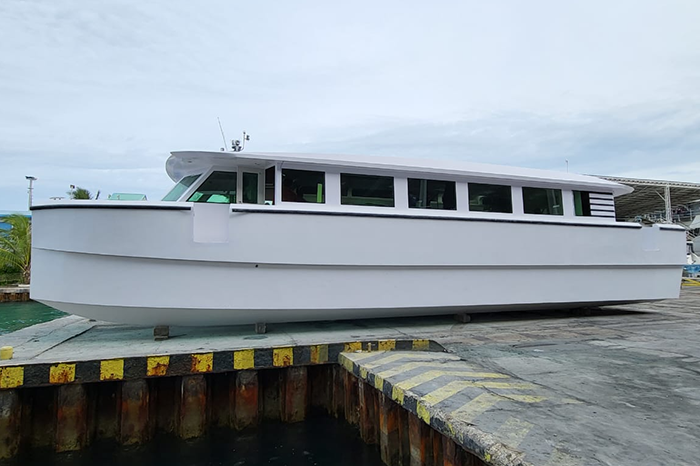
In summary, the boat design process is a complex and technical endeavor that involves several stages. Each stage requires a thorough understanding of naval architecture, structural engineering, and materials science. By following these stages and paying attention to the specific technical considerations involved, a designer can create a safe, efficient, and aesthetically pleasing boat that will meet the requirements of the client.
To read about the “ QUESTIONS TO ASK A DESIGNER TO BUILD YOUR DREAM BOAT “, click here
0 comments Leave a reply
Save my name, email, and website in this browser for the next time I comment.
Recent Posts
- KEY LESSONS I LEARNED FROM MY FREELANCE JOURNEY IN 2023
- THE FREELANCE ECONOMY: KEY TRENDS AND PREDICTIONS FOR 2024
- THE RISE Of HDPE IN BOAT MANUFACTURING: TRENDS & BENEFITS
- THE CRITICAL ROLE OF FEASIBILITY STUDY IN BOAT DESIGN AND NAVAL ARCHITECTURE
- THE CHALLENGES Of SMALL CRAFT DESIGN COMPARED TO LARGER VESSELS
Recent Comments
- Casey Lim on HDPE BOAT PLANS
- BRYN BONGBONG on HDPE BOAT PLANS
- Keith on HDPE BOAT PLANS
- Daniel Desauriers on WHY HDPE BOATS?
- December 2023
- November 2023
- October 2023
- February 2023
- January 2023
- September 2022
- January 2021
- ARTIFICIAL INTELLIGENCE
- boatbuilder
- BOAT CONSTRUCTION TECHNIQUES
- BOAT DESIGN COST
- boatdesign process
- CAREER PATHWAYS
- COMMERCIAL BOATS
- conventional boats
- custom boat
- DESIGN ADMINISTRATION
- DESIGN SPIRAL
- EXTREME CONDITIONS
- FEASIBILITY STUDY
- Freelance advantage
- freelance boat designer
- FREELANCE ECONOMY
- FREELANCE JOURNEY
- FRP Boat without Mold
- HDPE Collar
- INDIA'S MARITIME
- INVENTORY MANAGEMENT
- ISO STANDARDS
- Mass Production
- Monhull vs Catamaran
- Naval Architect
- Naval Architecture
- PLANING HULL
- Project Management
- Proven Hull
- PSYCHOLOGY OF BOAT DESIGN
- QUALITY CONTROL
- RECREATIONAL BOATS
- RISE OF HDPE
- ROYALTY AGREEMENTS
- SANDWICH VS SINGLE SKIN
- SOLOPRENEUR
- YACHT DESIGN COURSE

Yacht Design and Production BEng Hons
Solent university, southampton, placement year, year abroad, foundation year, your questions answered ..., how do i apply and how easy is it to get in, how good is this course.
Do you dream of designing race-winning yachts or multi-million-pound superyachts? Take the first step to fulfilling your ambition by studying on Solent’s unique and highly-regarded yacht design and production
Most helpful review for Engineering and Production and Manufacturing Engineering at Solent University, Southampton
Yacht design and production, beng hons fulltime.
Interesting course, with good lecturers who explain well
What you will need to do
What you won’t need to do, points of entry for yacht design and production beng hons, entry requirements for engineering and production and manufacturing engineering at solent university, southampton, required subjects for yacht design and production beng hons at solent university, southampton, ucas points for current students on engineering and production and manufacturing engineering at solent university, southampton, english language requirements, what else do you need to know when applying to university in the uk.
Navigating the university application process can be a bit daunting at the start. Use our series of helpful guides on key steps in the process to get started.

What is UCAS?

University Application Process

Your Guide to Clearing
What do you need to know about the cost of university in the uk.
Studying at university can be expensive. Read our default hints and tips to get the best value for the money.

How much does it cost to go to university?

Cheapest University Cities for Student Accommodation in the UK

Student Finance at University: How To Budget Effectively
Most relevant student reviews for yacht design and production beng hons at solent university, southampton.
Interesting course, with good lecturers who explain well review#toggle">read more
Most relevant Student Reviews for Engineering at Solent University, Southampton
Mechanical engineering, beng hons fulltime.
As said in the previous field it lacked practical lectures, it seems like the university had focused on the theoretical side. Our studies were not busy, and if we wanted to actually take something home we would have needed more homework as now there was lectures only 1 time a week which was not enough to solidify our knowledge. review#toggle">read more
WHAT A DEGREE! It has been fun, yet challenging. Interesting, yet perplexing. Yet, everyday I wake up, roll out of bed and turn up to the 6 lectures per day :) review#toggle">read more
Doing the marine engineering course at Warsash, the course is taught by very qualified and experienced tutors who are extremely helpful in providing extra support for lessons. review#toggle">read more
Electronic Engineering with Science and Engineering Foundation Year, BEng Hons FullTime
I came in from Nigeria to study Masters in Applied AI and Data Science and it has very cool so far review#toggle">read more
Great course, if you want to be in that industry review#toggle">read more
Live Event Technology, BSc Hons FullTime
the teachers are great and understanding its a fun creative course review#toggle">read more
Tutors have all been good and knowledgeable review#toggle">read more
It’s an awesome Uni I have learned a lot and met such a lovely people in there. review#toggle">read more
Electronic Engineering, BEng Hons FullTime
It was okay have very little to compare it to review#toggle">read more
Course is relevant and interesting review#toggle">read more
Most relevant Student Reviews for Production and Manufacturing Engineering at Solent University, Southampton
Yacht and powercraft design, beng hons fulltime.
Amazing experience, can’t wait to see what the future holds. review#toggle">read more
Yacht Design and Production with Science and Engineering Foundation Year, BEng Hons FullTime
great course and good tutors to help review#toggle">read more
The lectures are badly planned and the teachers don’t know how to help struggling students. JBP... review#toggle">read more
The teaching was generally excellent despite a couple of mishaps causing great confusion amongst the course. Generally the course is excellent and difficult despite the reputation of the university. review#toggle">read more
16 aggregated reviews by students studying at Solent University, Southampton.
Accommodation Sponsored
Every Student provides economical student accommodation, with non-ensuite rooms starting from £119 per week with bills included. Book now with no reservation fee. If you’re still waiting on you’re a Level results, then fear not, you can still secure your room.

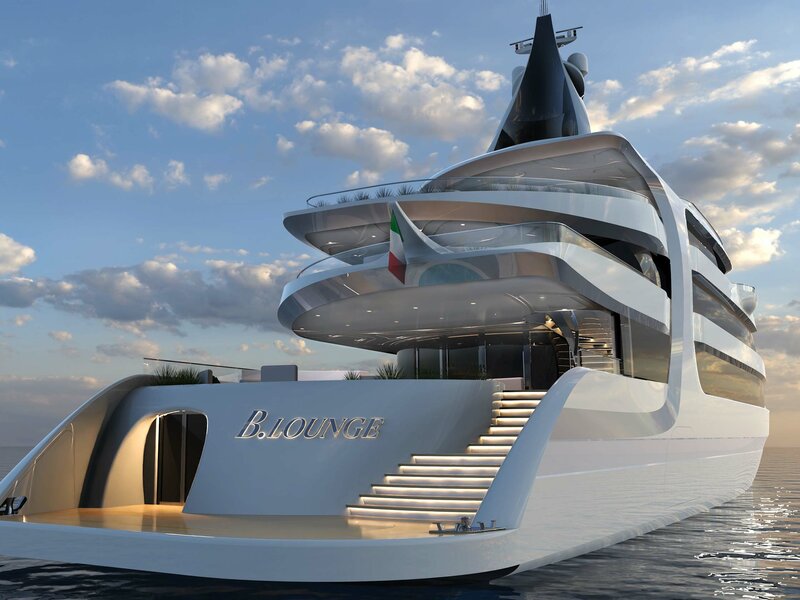
Yacht Design
November 2024
20.100 € Find out the current facilitations
The Master in Yacht Design offers the ideal educational path to become a Yacht Designer
The Master in Yacht Design offers the ideal educational path to become a Yacht Designer, by giving the necessary skills to deal with every stage of the design process – from the initial research and development of the concept to the actual construction of the interiors and exteriors and the validation of production processes in the boatyard.
In recent years, the nautical sector has expanded constantly, confirming its role as one of the drivers of Made in Italy design. Furthermore, and the new classic approach, based on naval architecture, is taking on an automotive oriented edge, which introduces new working standards and technical and style solutions borrowed from car design.
The vocation of the Piemonte area, which boasts a number of style centres and renowned companies in the land and sea transport sectors, as well as one of the world’s largest shipyards, combined with the short distance from the coast of Liguria, makes Turin the natural setting for a training course founded on the growing process of osmosis that links the yacht world and the automotive industry.
Information to decide
Methodology and structure.
The course is planned in levels, which begin with providing students with essential knowledge of the nautical sector, in terms of both cultural aspects and basic techniques. From there, students gradually acquire the skills connected with yacht design.
Starting from a study of the history and current scenarios of the nautical sector, students will go on to study the market and obtain more detail knowledge of the different types of boats. They acquire significant knowledge of materials, technologies and production methods, including through hands-on experience in a shipyard. They are provided with technical drawing and design tools, as well.
A further strength of this Master course is the fact that is delivered on two campuses, Turin and Venice. This offers participants a dual scenario, in which both cities represent an important aspect of the themes the course is focused on: the tradition of the automotive industry on the one hand, and the maritime vocation on the other.
The training course ends with a Thesis Project, developed on a brief given by a boatyard or a design studio.
Who is it for?
The admission of the Master is open to graduates in Architecture, Engineering and in the field of Design (Transportation, Interior, Product), as well as professionals in the sector seeking to apply their skills in this specific area.

IED Open Days
We look forward to seeing you from 9th to 14th of september.
- Find out more!

Federica Bertolini
Style Manager - Azimut Yachts Thesis Supervisor
Course Coordinator
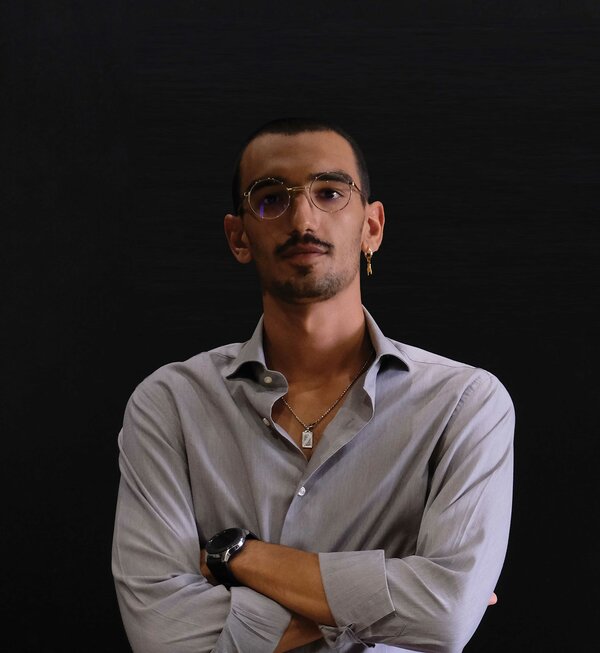
Lorenzo Ciuffatelli
Transportation Designer - Pinifarina
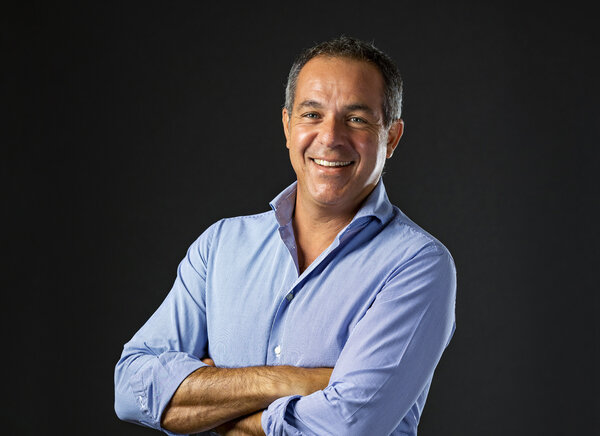
Andrea Sculati
Founder and Director - Sculati & Partners

Luca Sordelli
Marketing and Communication Manager - Harken Italy, Journalist - Wired, Barche, Nautech

Nicola Scopelliti
Freelance Yacht Designer & Co-founder - Scopelliti Rasia Architetti

Lorenzo Penato

Camilla Pierucci
Naval and Nautical designer
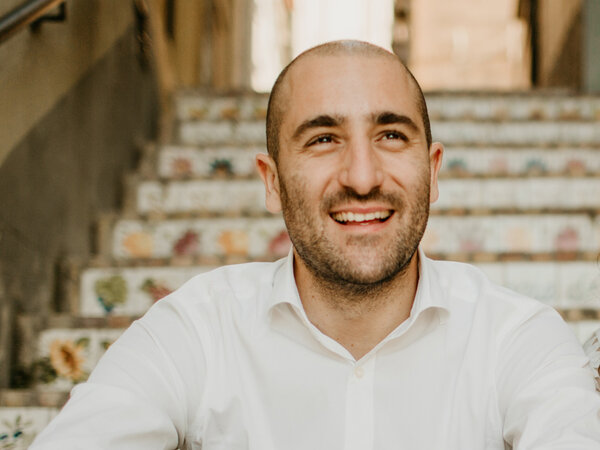
Stefano D'Adamo
Style Coordinator - Azimut Yachts

Roberto Tarozzo
Engineering Office Manager / Project Manager - Azimut-Benetti
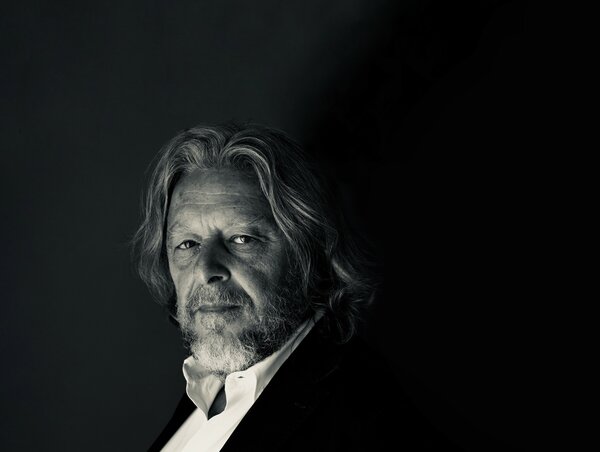
Sergio Cutolo
Founder and Owner - Hydro Tec

Alessandra De Luca
Training & Development Manager - Azimut-Benetti

Umberto Maria Fossati
Founder and Director - Fossati design Bureau
Website LinkedIn

88 Dragon - Sport Fly

You may be interested in:
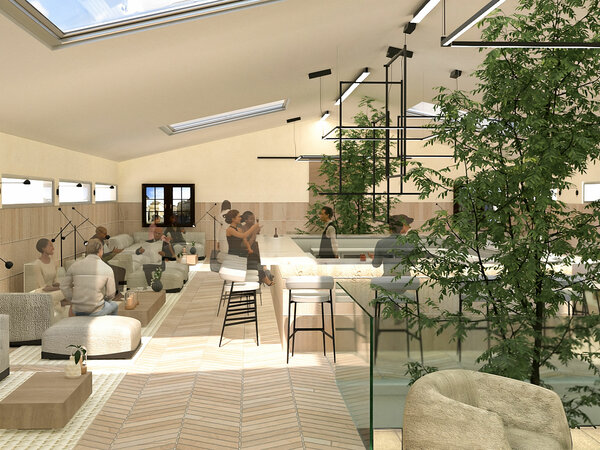
Interior and Spatial design
Interior Design
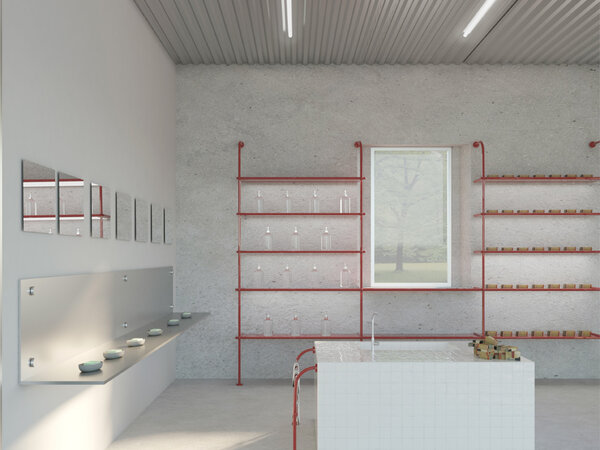
Transportation Design and Mobility
Transportation Design
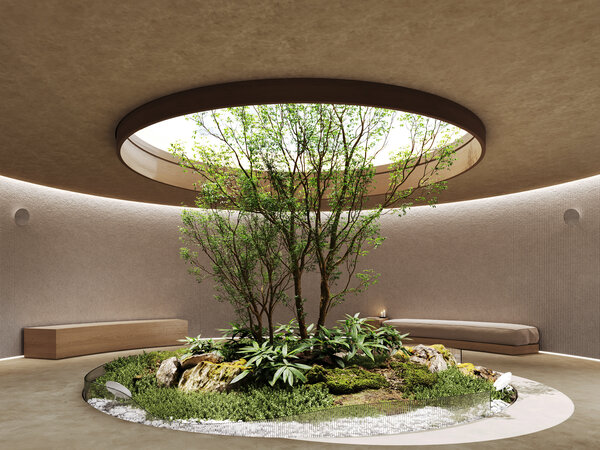
Interior and Furniture Design

Interior and Spatial design, Product and Service Design
Italian Interior and Furniture Design Academic Year
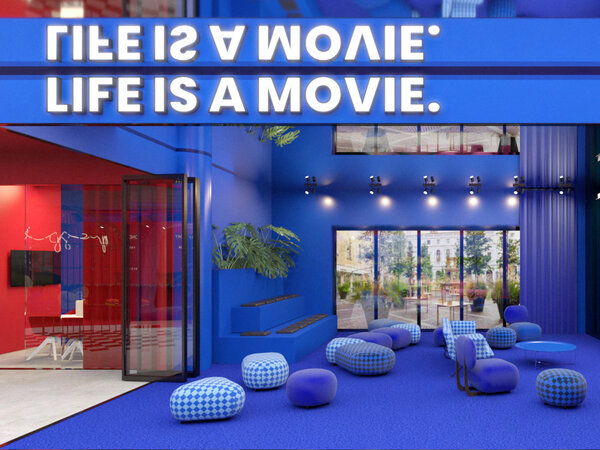
Interior Design – Focus on Retail and Commercial Spaces – Fall Semester
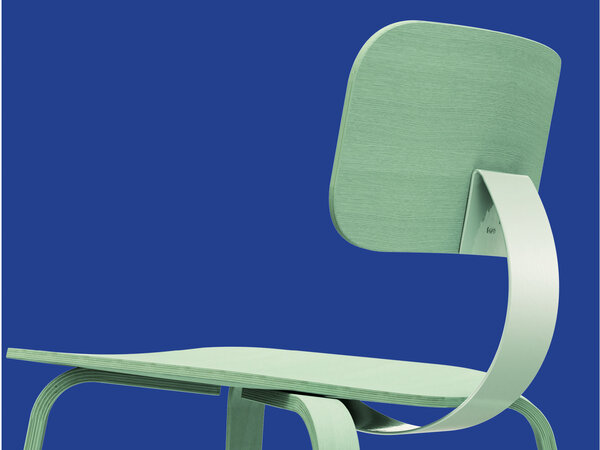
Product and Service Design, Interior and Spatial design
Furniture Design – Spring Semester
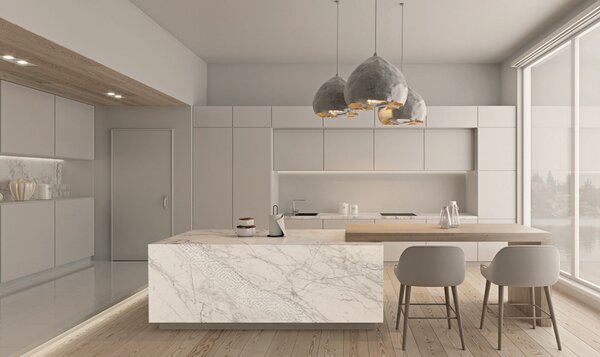
Interior design - Academic year - Fall intake
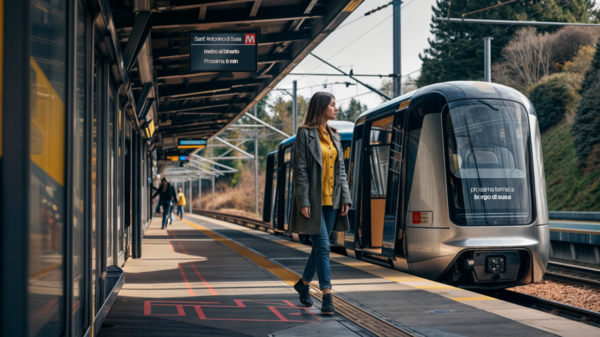
24 July 2024
IED Turin Graduates Its First Master's Students in Transdisciplinary Design. Mobility
Eight international students completed a thesis in collaboration with the Metropolitan City of Turin and the Links Foundation, aimed at improving regional mobility in Piedmont.
22 July 2024
The Enric Miralles Foundation rewards the coherence and sensitivity of “Cel·la”
Maria Alonso wins the second edition of the IED Enric Miralles and Benedetta Tagliabue Award for the Best Interior Design Thesis at IED Barcelona with a sustainably built temporary shelter for artists inspired by monastic cells that includes the design of the furniture.

10 July 2024
IED Barcelona culminates the academic year with two days of graduations
The graduation ceremonies will take place on 18 and 19 July, respectively, for 79 master’s and postgraduate students and 145 summer course students.
04 July 2024
170 students of 44 nationalities taking part in the IED Barcelona Summer Courses
The educational offer of the summer programmes includes 10 courses aimed at adults and three for junior students. As a new proposal for this year, all will address the same transversal theme: water from the perspective of design.

01 July 2024
The new Marconi campus of IED Turin illuminated by video mapping that pays homage to its Alumni
Until July 20th, the new Marconi campus of IED Turin will be illuminated by a video mapping installation that tells the story of the school's courses through some of the best projects created by alumni in recent years
21 June 2024
Best Thesis Awards 2024 – IED Barcelona
Vehicles with a positive impact on people and the environment, building personality through fashion, and approaching food culture from a visual arts perspective. These are some of the themes of the final projects that earned these awards.
14 June 2024
Six FAD awards for Design and Visual Arts for IED Barcelona
The Gràcia-based school has won the prize for best Educational Centre at the Habitácola Awards, 1 Gold and 3 Bronzes at the ADG Laus Awards, and the Opinion Medal at the ADI Medals. These accolades demonstrate the creativity and innovation emerging from IED’s classrooms.

12 June 2024
IED Barcelona 2024 Undergraduate Graduation
The Ceremonies will be held on 17 June in the Mediapro Imagina building.

11 June 2024
Dolce & Gabbana Dal Cuore alle Mani, conversazioni con Florence Müller
IED Milan is organizing a conference dedicated to the Dolce & Gabbana exhibition, "Dal Cuore alle Mani" making its world premiere in Milan at Palazzo Reale.
Don't miss it

09 September 2024 - 14 September 2024 • Multiple
A calendar of online and in presence appointments to discover all IED Italy and IED Spain educational paths in the areas of Design, Fashion, Visual Arts, Communication and Restoration.

Clearing 2024 is now open
- Apply online
- Start a chat
- 023 8001 1722

BEng (Hons) Yacht and Powercraft Design
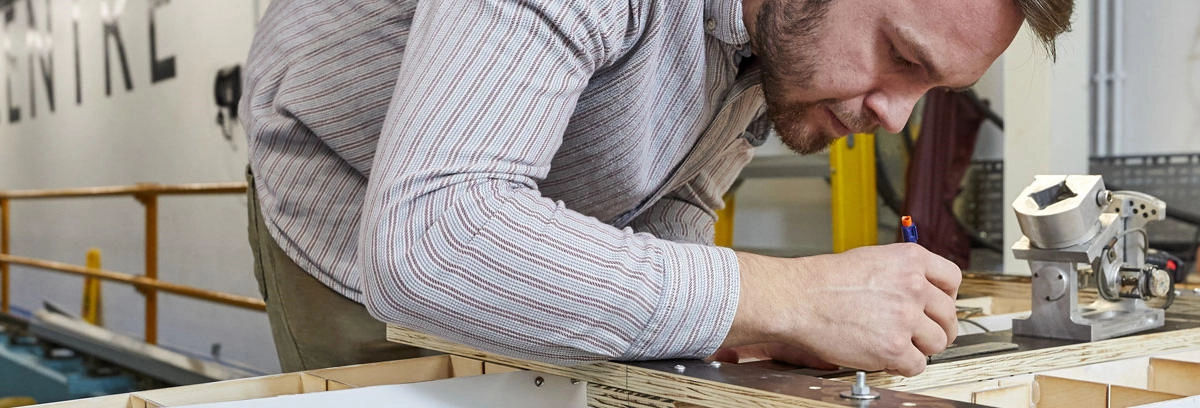
- 4 years with foundation year
Why study a yacht and powercraft design degree at Solent University
Plot a course for your engineering skills - specialise in naval architecture for power- and sail-craft. Solent’s highly regarded degree is taught by experienced marine architects and designers.
- 0 years of yacht and powercraft design and production at Solent University
- 0 th in the top 20 best student cities (StudentCrowd, 2023)
- 0 th UK uni for sustained employment (Longitudinal Educational Outcomes 2022)
- Prestigious guest lecturers from key industry organisations such as the Royal Institute of Naval Architects (RINA), Nigel Gee BMT, Babcock Engineering, Gurit, Sunseeker, Rob Humphries Design and Norbert Sedlacek (Open 60 skipper).
- Full access to specialist design and construction facilities, including industry-standard CAD and drawing offices, as well as a fully equipped specialist composite workshop, a 60m hydrodynamic test tank and static four-metre stability tank.
- Some of our graduates have gone on to work at companies such as Laurent Giles Naval Architects, Sunseeker Yachts, Humphries Yacht Design, Monaco Marine, Viareggio Shipyards and Incat Crowther Design.
- To help you build your professional network, you will be encouraged to attend local boat shows, including the Southampton Boat Show and Seawork International. Previous students have also been on yard visits, with recent trips including Sunseeker, Green Marine and Solent Refit.
- One of Solent's key areas of research is science and engineering with the creation, sharing, and application of insight, innovation, and knowledge for safe, sustainable seas – you will learn direct from leading experts in their field.
Course overview
Solent’s internationally-recognised yacht and powercraft design course focuses on small craft technology, Computer-Aided Design (CAD) and design practice, delivering essential engineering theory and design skills.
Previous students have benefitted from attending guest lectures by speakers from key industry organisations such as the Royal Institute of Naval Architects (RINA), Nigel Gee BMT, Babcock Engineering, Gurit, Sunseeker, Rob Humphries Design and Norbert Sedlacek (Open 60 skipper).
To help build their professional network, students are encouraged to attend local boat shows, including the Southampton Boat Show and Seawork International. Previous students have also been on yard visits, with recent trips including Sunseeker, Green Marine and Solent Refit.
This course is part of the South Coast Institute of Technology (IoT), a partnership of colleges, universities and industry-leading employers to create new career opportunities in the technology sector. IoT courses like this one are precisely tailored to the needs of employers in the maritime, engineering and digital industries – industries which are hungry for talented new engineers, technologists, technicians and creatives like you.
Any questions?
Contact UK admissions
Contact international admissions

This course is part of the South Coast Institute of Technology, a collaboration of FE colleges and universities offering courses that can lead to a wide range of exciting career pathways to boost employability.
Student work
Our creative degrees allow our students to develop a critical eye for design with a knowledge of different design approaches and problem solving techniques. Take a look at some of the great work they produce.
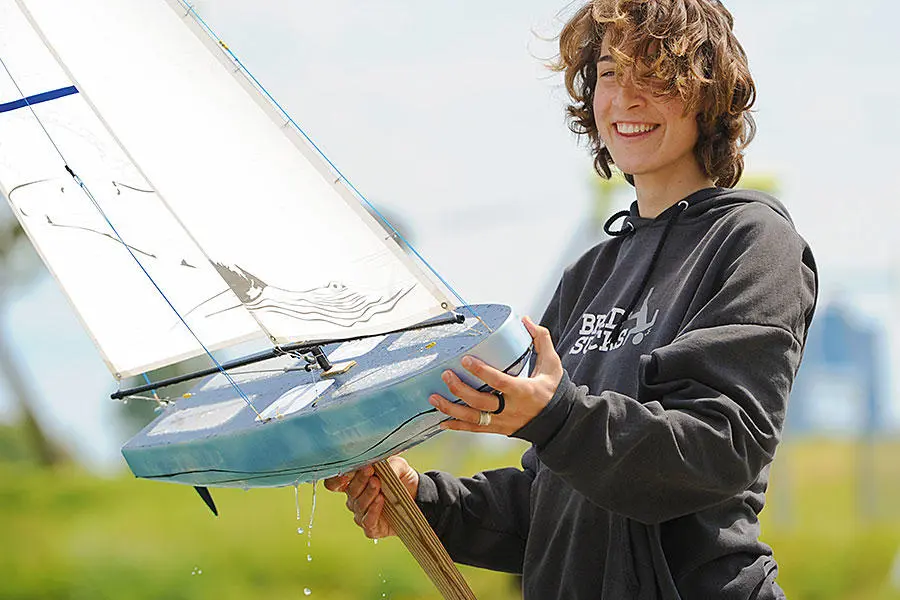
Course features
Foundation year available.
If you're not quite ready for a full undergraduate degree, there's alternative entry through one of our foundation years
Specialist facilities
This course has access to specialist facilities
Top-up option
If you have an appropriate Level 5 qualification, you can top it up to a degree in just a year
Study abroad
You have the opportunity to study abroad in one of our partner universities for a semester on this course
Who is this course is for?
This course is aimed at those who want to design smaller leisure craft such as sailing boats and powercraft.
Students learn the fundamentals of yacht design alongside the latest construction methods to gain a solid grounding for roles in yacht design, naval architecture or equipment design.
What does this course lead to?
Course graduates have gone on to various industry roles, including naval architect or design engineer, at companies such as Laurent Giles Naval Architects, Sunseeker Yachts, Humphries Yacht Design, Monaco Marine, Viareggio Shipyards in Italy and Incat Crowther Design in the USA.
Graduate stories
Hear from Solent alumni about where their careers have taken them and how studying at Solent prepared them for their future.
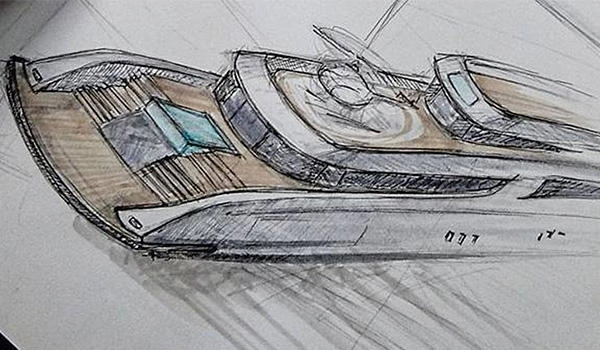
“ I recommend this course for all those who want to start a career in yacht design industry. ”

Meet the team
The course is delivered by a team of specialist naval architects and production designers, supported by CAD/drawing office instructors and FRP workshop instructors. All team members come from the yacht and small craft industry and maintain their close links through consultancy, design practice and professional bodies.
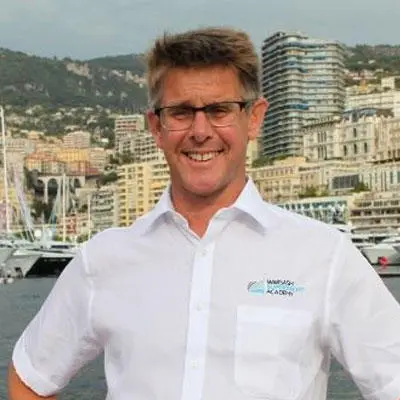
Giles Barkley
Course Leader
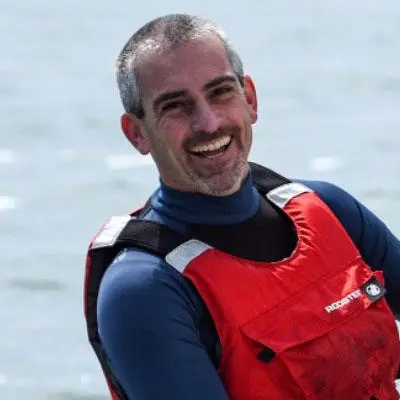
Vittorio Boccolini
Senior Lecturer
The University cannot guarantee any particular members of staff will teach specific aspects of the course in the future, but will endeavour to ensure the teaching team maintains their balance of experience and qualifications.
Students have full access to the University’s specialist facilities, including industry-standard CAD and drawing offices, as well as a fully-equipped specialist composite workshop a 60m towing tank and static four-metre stability tank.
Our vibrant campus brings state-of-the-art facilities to enhance your learning and elevate your student experience. Our award-winning teaching building, The Spark is centred around students and offers a stimulating study environment with flexible learning spaces. Away from studying, why not try out the gyms, fitness studios and sports halls in our £28 million Sports Complex, or watch a blockbuster film at our student-run cinema with Dolby Atmos audio.
International opportunities
Broaden your horizons by adding an international dimension to your CV – essential to achieving success in today’s fast-changing, global environment.
Studying, working or volunteering in another country could be the experience of a lifetime. Enhance your degree by developing important global skills such as knowledge of other countries, language skills, intercultural awareness, adaptability and confidence.
For more information, please email [email protected] .

What you'll study
Core modules, naval architecture.
Introducing the practice of naval architecture design, you will learn to use and apply geometric parameters which help determine the hull shape for the vessel. You’ll apply design tools used for producing an initial hull form that meet certain design criteria in order to produce a suitable and stable hull.
Computer Aided Design
You’ll focus on the fundamental engineering drawing skills required by yacht design and production students in order to produce a set of 2D design and build drawings for either a sailing yacht or motor vessel and its components.
Marine Systems
You’ll learn about mechanical and electrical marine systems typically installed in small craft and examine the nature and range of marine systems fitted on board, to gain an understanding of the technical aspects considered for the design and installation of small craft marine engineering components.
Marine Materials and Production
This module provides an introduction to the different materials commonly used in the construction of marine craft and other various components found on board. You will also learn the production processes involved in the construction of boats from these materials.
Structural Mechanics
Understanding how to ensure the structural integrity of a vessel is a key element of designing a safe vessel. This module provides an introduction to the fundamental core material on which both structural mechanics theory and marine craft structural design are built.
Yacht Engineering Skills
Almost all aspects of yacht design are underpinned by a knowledge of mathematics, and you will learn skills for yacht and small craft designers to transpose formulae for problem solving.
Resistance and Propulsion
This module continues to build on the principles covered in the first year, this time concentrating on the prediction of hydrodynamic resistance and powering requirements of small craft hulls.
Computer Aided Modelling
Due to the plethora of design software used in the marine industry, this module will ensure that you develop the ability to transfer design information effectively between different software packages.
Sailing Yacht Design
The focus of this module is on the practical design of sailing boats, and this module gives you a unique opportunity to gain experience of sailing yacht designs for craft up to 24 metres in length, as well as working on a range of sailing yacht design case studies.
Motor Boat Design
The aim of the module is to develop the student’s technical design skills alongside the CAD design skills as required in a design office for motorboat design. The module also provides students with authentic ‘real world’ experience close to the typical design office practice associated with motor vessel design practice.
Applied Marine Systems
To refine the marine system integration process, you will gain an overview of regulations applicable to marine engineering systems. You will also acquire an appreciation of marine mechanical systems and finally, you will gain an introduction to the issue of ‘Green Design’ and environmental considerations.
Structural Analysis
Clearly designing a strong but light structure is an essential aspect of developing a small craft design. This module develops your knowledge and understanding of the key principles of structural analysis.
Computer Aided Engineering
This module focuses on modern CAE techniques employed to evaluate the technical and statutory aspects of design. You will draw on your computing skills as well as technical design theory to utilise this knowledge in practical design scenarios, enabling you to make quick, efficient design choices.
Carrying out project work is one of the most critical skills for your future career as an engineer. In this module, you will carry out a project in a topic area chosen by you. You will be encouraged to undertake project related to real world application that allows you to build upon and expand your knowledge for renewable energy and engineering.
Structural Design for Production
This module develops the application of structural design principles and methodologies to a variety of small craft structures. The module relies heavily on taking a computer assisted engineering approach to calculate structural loads.
Optional modules
Please note: Not all optional modules are guaranteed to run each year.
Advanced Naval Architecture
The module provides you with the solid naval architecture theory to a lot of the practical design areas associated with sailing yacht performance and motorboat performance when considering both the resistance and propulsive side in conjunction with the whole boat design.
Structural Design Theory
Looking in detail at the design of specific components this module will illustrate the applications and limitations of theories applied to real marine structural engineering problems.
Naval Architecture in the Workplace
This Work Based Learning module is to develop a reflective approach to working practice, by experiencing and developing a range of degree-related ideas and concepts for professional working environment, to prepare you for industry.
How you will learn and be assessed
You will learn by:.
- Directed learning
- Collaborative learning
- Guided learning
You may be assessed by a combination of:
- Written exams
Solent’s curriculum framework builds on our unique, creative and applied approach to teaching. The transformation of students’ lives is at the heart of our mission as a university, and our curriculum – informed by the latest theory – reflects this shared educational vision.

Study support
The student achievement team are on hand to help you succeed during your studies at Solent. They aim to contact you at key times during your time here with personalised information, advice and guidance, by email or phone.
Access Solent provides information, advice and guidance for disabled students.
All students can access Succeed@Solent , Solent's online guide to getting better grades. It offers extensive, practical information and advice on topics such as academic writing, research and presentations.

Why choose a career in yacht and powercraft design?
The UK has a strong pedigree in yacht design and the UK leisure yacht and small commercial marine markets generate direct revenues of 3.97bn, according to British Marine , the membership organisation for these industries. The industry is supported by over 38,000 jobs across a variety of roles, with over 10,000 new boats produced in 2019 for both domestic and international markets.
During your studies you’ll benefit from guest speakers from companies such as Nigel Gee BMT, Babcock Engineering and Structural Polymers. Yard visits are also possible, with recent visits including Sunseeker International and Solent Refit.
Students are encouraged to attend local industry events, including the world-famous Southampton International Boat Show and Seawork International. A full programme of RINA Southern Joint Branch lectures is also supported.
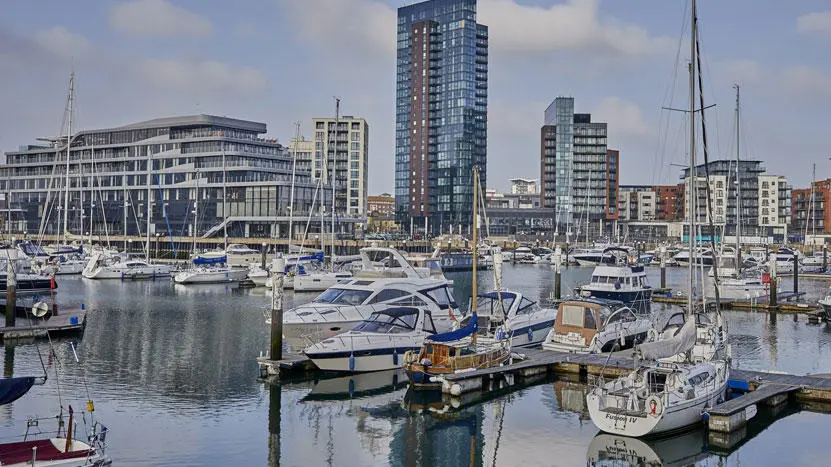
You could earn:
Naval architect.
Starting salary: £25,000 to £35,000
With experience, salaries can range from £35,000 to £50,000, rising to £60,000 in some instances for senior naval architect posts.
The stated salaries are published on prospects.ac.uk .
Solent Futures
The Solent Futures team is committed to getting students into great careers.
While you are studying, the team can help you with finding work experience or placements, link you with a mentor, check your CV, or offer one-to-one guidance.
If you're in your final year, we also have graduate job opportunities just for Solent graduates.

UK uni for sustained employment
Longitudinal Educational Outcomes, 2022
Accreditations, recognitions and memberships
Tuition fees.
The tuition fees for the 2024/25 academic year are:
- UK, EU (settled status) and Channel Island full-time fees: £9,250 per year
- International full-time fees: £16,125 per year
For further information, please visit our tuition fees page .
Extra course costs
While most course costs are covered by your tuition fees, some essential resources and optional extras may need to be paid for separately. These additional costs are listed below. For advice on budgeting and managing your money, please contact [email protected] .
The 2024/25 other costs are:
Optional costs
- Minor materials: approximately £80
- Field trips to local shipyards in final year: approximately £100
- Minor costs for final year project: approximately £50
Bursaries, scholarships and financial support
Solent University offers a range of bursaries and scholarships that provide financial assistance or waive fees for tuition or accommodation. Each bursary or scholarship has specific eligibility criteria. Check out our bursaries and scholarships pages to find out more.
Cost of living support
At Solent, we understand that the cost of living crisis may be of some concern. To help, we've put together some detailed information to show what support is available and how to make your money go further.
Graduation costs
There is no charge to attend graduation, but you will be required to pay for the rental of your academic gown (approximately £45 per graduate, depending on your award). You may also wish to purchase official photography packages, which range in price from £15 to £200+. Graduation is not compulsory, so if you prefer to have your award sent to you, there is no cost. Extra guest tickets will go on sale after results publication and will be sold on a first-come-first-served basis. The cost per ticket is currently £15. Please note, we do not guarantee there will be any extra tickets available to purchase.
Student finance videos

Entry requirements
Please select an option below:
Key entry requirements
112-128 ucas tariff points.
- A minimum of two A-levels, including two STEM subjects, a BTEC Extended Diploma at DMM or BTEC Diploma at D*D* in a STEM based subject, T-Level Merit, or equivalent , which comply with the minimum entry requirement of 112 UCAS points.
- A BTEC Subsidiary Diploma will be considered in conjunction with other qualifications.
- Qualifications equivalent to the above may also be considered.
- Entry to year two may be offered to applicants holding an HND in an appropriate subject.
- For further information about UK qualifications, please contact admissions.
As a general guide, we look for qualifications that are equivalent to the British high school A-levels.
If you are applying from outside the UK, find information about entry requirements, visas and agents for your country here.
For further information about EU qualifications, please contact admissions .
For international students who do not meet the direct entry requirements for this undergraduate degree, our trusted partner, QA Higher Education offers the following pathway programme designed to develop your academic and English language skills:
- International Foundation Year - for progression to the first year of an undergraduate degree
For further information about international qualifications, please contact admissions .
Note to all international students requiring a visa
All international applicants need to be aware that the English language requirements to attend Solent University, and the English language requirements to obtain a visa from the Home Office, may be different. This means that if you meet the Solent University language requirement to gain a place on the course, you may still have to meet additional requirements to be granted with a visa by the Home Office.
We strongly advise all applicants to visit the Home Office website which outlines all the requirements for a successful visa application and to take a look at our 2023 course entry statement document.
How to apply
Any student applying for the first year of a full-time/sandwich undergraduate course must apply through UCAS (University and Colleges Admissions Service). This includes mature, overseas and EU students.
Nearly all schools and colleges offer their students the facility of applying electronically through the UCAS website using 'Apply'; it may also be used by those applying independently in the UK and overseas. This facility and all course information can be found on the UCAS website: www.ucas.com .
Your application should reach UCAS by 31 January if you hope to enter a course the following autumn. Early application is advised for the most popular subject areas. Late applications may be made until the end of June. The UCAS Code for the University is S30, code name SOLNT.
Find out what happens after you apply
Contextual offers
Solent endeavours to offer learning opportunities to students from all backgrounds. When we receive and review an application, we take into consideration the context and personal circumstances of applicants when making a decision, which means our advertised entry tariff could be reduced.
Find out more about Solent's contextual offers
Alternative entry options
Top-up route:
We welcome applications from students currently studying a Foundation Degree, DipHE, HNC, HND or modules of an undergraduate degree course at another university, who wish to enter directly into Years 2 or 3 of one of our undergraduate degree courses. Please contact our admissions team for more information: contact us
Language requirements
Applicants who do not have English as their first language will be required to demonstrate an approved level of proficiency in the use of the English language. The agreed minimum requirements for this course are:
- IELTS minimum 6.0 overall with a minimum of 5.5 in each individual component
- TOEFL IBT minimum 80 with a minimum of 20 in each individual component
- Duolingo English Language Test - 115 overall with minimum of 95 in each component or equivalent.
Qualifications are checked before enrolment, and international students must bring their original certificates or certified copies when coming to study at the University.
Pre-Sessional English programme The University also offers a pre-sessional English programme for international students who wish to improve their level of English before starting a degree course.

Make your application

Not ready to apply?


IMPECCABLE DESIGN
Meticulous engineering.

Bespoke Design & Naval Architecture

Production Yacht & Tooling Design

Rendering & Promo Materials
#laminatestackanalysis #hulldesign #rendering #ISOcompliance #weights #hydrostatics #ergonomics #helmdesign #customhardware #livewellsystems #longevity #visibility #anchoring #sportfisher #electricpropulsion #structuralgrid #glassspecification #drainage #hardwarelayout #seaworthiness #interiorlayout #sterndrives #rangecalcs #gofastboat #stability #fuelsystems #ABScompliance #dayboat #systemsdesign #sightlines #inboards #freshwatersystems #generalarrangement #machinerylayout #steppedhull #tankage #engineinstallation #ventilation #exhaustsystems #ABYCcompliance #CFD #tender #shorepowercalcs #photorealisticrendering #conceptsketching #steeringsystems #motoryacht #runninggear #hulllines #firesuppression #acoustics #lighting #seachests #fishability #servicability #constructiondetails #productionfriendliness #assembly #safety #automation #plumbing #nonskid #runabout #paintdesign #IMOcompliance #socialzones #soundproofing #outboards #cabincruiser #rigidinflatable

Our wealth of experience at design offices, boatbuilders, and tooling houses has given us a wide array of lenses to see each stage of the yacht construction process through. You're in good hands.

Principal Naval Architect
ADRIAN VAN BENTHUYSEN
Throughout his career in the marine industry, Adrian has worn many hats, which has earned him a vast knowledge of every stage of boatbuilding. Having first learned the craft of yacht construction while building joinery at a boatbuilder in Maine, Adrian's resume is star-studded with world-renown design offices, tooling manufacturers, and boatbuilders alike.

Principal Designer
PAIGE BRENNAN
With a background in Industrial Design, Paige has combined her expertise in product development with her knowledge of yacht design to shape a coveted niche for herself in the marine industry. Over the years, Paige has carved her way to the top of the boating industry as a lead designer at several of the premier yacht design firms in North America.
DESIGN PROCESS
CLIENT MEETING
We abhor cookie-cutter design. To help your new product stand out from the competition, we'll paint a vision using your requirements, and share our knowledge of market trends and where you can challenge the status-quo. From here, a simple napkin sketch will be leading us forward.

CONCEPT DESIGN
Next, we take an artistic, high-level first pass at the design using your unique requirements, including specific features or functionality brought up in our initial meeting. By the end of this phase, we'll have gestural concept renderings of the boat.
PROJECT PLANNING
When you're confident that the concept looks like your next boat, we'll present a contract and plan a tailor-made project schedule and engineering package, specifically designed for your needs.

DETAILED DESIGN
The design comes to life. Pencils get sharpened and we answer important questions about powering, structure, and hydrostatics, all while paying attention to practical concerns like hardware placement and ergonomics. We're only done when we have a complete 3D model of the boat and its systems.
PRODUCTION DRAWINGS
Once the corners of the map have been filled in, we create a comprehensive package of engineering and construction drawings comprised of lamination schedules, machinery installations, lighting layouts, and much more, all designed to guide your team through the manufacturing process.

PRODUCTION SUPPORT
Our work is not complete after the drawing package is delivered. We can help answer questions and create shop drawings throughout the entire build process, from the first gelcoat sprayed until your new product hits the shipping trailer, including sea trials and shakedown.
Head Office
Bath, Maine, USA
Tel: 207-601-3825
- Superyachts
- Accessories
- Lawyer on Board
- Revenue on Board
- Charter and Travel
- Boat Gourmet
- Vulkan auscultates and supports
- SHOP ONLINE

Ten years of yacht design: production boat
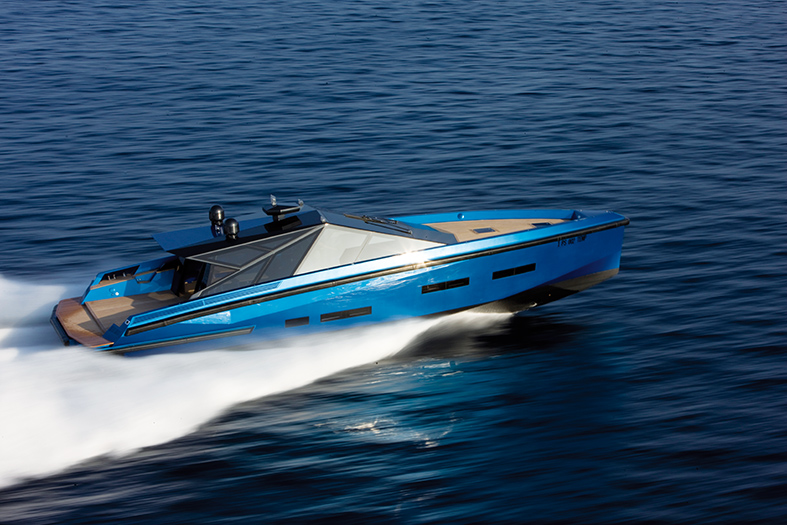
After having looked at how custom and semi-custom yacht design has developed over the last decade, it’s time to look at the most significant elements in the development of production yacht design, focusing on 10-15+ metre yachts
by Maria Roberta Morso and Francesco Michienzi
An analysis of what has happened over the last ten years, and how the Italian yachting industry has fared, provides us with plenty to reflect upon and constitutes an example mirrored in all yacht-manufacturing countries. Let’s start from here. Apart from Italy, which countries play an internationally significant role in building production boats?
A number of yards in the United States can boast a long tradition in this field, but the majority of them primarily serve the domestic market, which incidentally is the biggest in the world. The names that come to mind include Hatteras, Bertam, Chris Craft and Hinckley, which also arouse interest on this side of the ocean. In Great Britain , Sunseeker, Princess and Fairline have paved the way over the years, managing to ride the wave despite ups and downs and changes of ownership, even during times of crisis. In France , the giant Jeanneau-Bénéteau has kept its head above water and set up an Italian branch – Monte Carlo Yachts – during the storm, guided firmly to success by Carla Demaria.

Magellano 74 by Ken Freivokh Design.
Spain has seen its manufacturers fall to their knees during the crisis and only the sound financial position of the family permitted Astondoa to weather the storm. Meanwhile, Rodman, a brand that seemed launched towards international horizons, instead stopped due to the crisis and has only recently returned to the market with new models. Turkey has remained cautious and a number of manufacturers have changed tack in order to tackle the crisis. They have introduced radical innovations into their production, rightfully earning a place for themselves in the European yachting market. In the meantime, a new brand, Sirena Yachts, has entered the market, putting forward captivating and sophisticated models. The Netherlands is another matter. The Dutch have stuck to tradition in the production yacht segment, boosted by a sound northern European market comprised of real sea lovers. Although the crisis has affected them, almost all of them have bravely resisted.
Now we come to Italy, which has been the real protagonist in the development of production yacht design over the last ten years.
Production boats require very careful planning and a farsighted vision of the market . An element that distinguishes them from the world of custom yachts and has a powerful influence on the development of design is the diversity of the reference markets. The custom segment allows you to be daring and in fact clients often demand it. However, in production boats the manufacturer has to pay attention to market signals, developing products able to find favour with a vast range of buyers. The crisis provided an opportunity to stop and reflect, to study solutions that would grab back the attention of a fearful clientele .
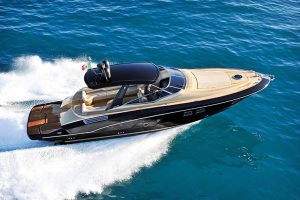
Sarnico Spider 46 GTS by Nuvolari e Lenard and Victory Design.
For example, in 2007‒2008, lobster boats were on the decline, but there was still an interest in quiet boats suitable for long trips, studied by many brands. At the opposite extreme, the era of ‘ missiles ’ with ultra-powerful engines had also come to an end, because they were too wasteful. This resulted in fine-tuning work, producing streamlined and aggressive models, albeit without going over the top. The green influence has played a bigger and bigger part in production boats too, year after year. What is more, even entry-level vessels in ranges such as Ferretti and Azimut have become bigger over the course of the decade.
New materials, such as carbon fibre , have become established. Glass , available in different formats and shapes, has made it possible to create large windows that make the interiors of large and small yachts lighter and pleasanter, even below deck. In 2008, this concept was expressed to the full in the Ferretti 830 and 881 . In the latter model, the master cabin has a bed that looks outside thanks to a triple window with openable portholes. In 2008, Atlantis presented the 50 with an “infinite” windscreen , while in 2010, the Absolute 70 featured a thousand openings in the walls, ceiling and hull, to really emphasize the contact with the outdoors.

The doors that separate the cockpit from the interior lounge became bigger and bigger, with systems being developed that enabled them to ‘disappear’. In some cases, the glass was drawn up by an electric motor to lie flat against the ceiling of the flybridge, a system used in some Ferretti and Riva yachts, such as the Riva 86 Domino . Or they are raised and lowered electrically, as in the case of the Pershing 70 .
The design of the bows , the inclusion of a flybridge above not overly large superstructures required detailed and sophisticated design work. One of the first examples was the Azimut 103S , designed by Righini and Galeazzi .
Relaxation areas in the bow gradually became a real must, as illustrated by Monte Carlo Yachts with its first model MCY 76 , presented in 2010, which paved the way in this and many other aspects of the layout thanks to the skilful work of Nuvolari Lenard . Extensive design work has also gone into the opposite end of the hull, where aft swim platforms have become increasingly functional, thanks to mechanisms for descending to the water level, incorporated ladders and systems that facilitate tender manoeuvres. New electronic navigation and on-board system control instruments feature on increasingly compact and ergonomic dash-boards.
In some cases, new technical solutions and compact engines have a positive effect on the internal layouts. We should certainly mention the Volvo IPS engines that, all other things being equal, as well as offering enviable performances and manoeuvrability, make it possible to enjoy some extra space in the hull thanks to their small size, making the interior more liveable.
Other devices that improve comfort and offer benefits in terms of usable space and volumes are the gyro stabilizers that, thanks to their stabilising action and bottom-heavy design, have made it possible to construct larger superstructures.

Wider 42 by Fulvio De Simoni.
As regards the stylistic and functional evolution in the yacht design, the so-called ‘ transformers ’, that is to say yachts with a hull transformation and extension system, are a perfect example. Tilli Antonelli , having left Pershing, created a model in 2011 that broke the traditional rules of the day-cruiser in many ways.
The fast, spacious Wider 42 expands its usable surface area when at anchor thanks to side terraces supported by runners, but can also be enjoyed on the move. And it’s not the only one. Other brands have adopted similar solutions, such as the Evo 43 and the Anvera 55 , a maxi rib in which the aft section of the tubes turn over to create a terrace measuring around 20 square metres.
The interiors have also become much more sophisticated over the last decade. The involvement of young designers has brought a breath of fresh air and lots of interesting ideas.
The design of furnishings and details hasbecome more and more important, so much so that the interiors and exteriors have been the subject of extremely detailed design work. At the same time, the quest for refined and practical interior materials has become necessary in order to meet the requirements of owners who have become more and more demanding, even in the case of smaller yachts.

SportRiva 56’ by Officina Italiana Design.
An iconic yard such as Riva has introduced constant stylistic developments, managing to bring in major innovations without overturning the very essence of the brand. Mauro Micheli and Sergio Beretta /Officina Italian Design are the men behind this. The models have grown in size, in some cases, but Riva’s stylistic features have been preserved in full. With the Sportriva 56 in 2008, Micheli and Beretta offered an interpretation of sporty glamour that would be developed in more and more sophisticated models over the coming years. The Domino 86 of 2010 paved the way for large and more habitable models, while the Domino 88 Florida and Super incorporate all the stylistic elements that act as a trait d’union between highly sophisticated ‘motor boats’ such as the Iseo, Aquariva and Rivamare , coupés, and flybridge yachts such as the Corsaro 100 .
In short, with a market that has gone back to being stable and with an increasingly attentive and demanding clientele, yacht design – even in the production yacht segment – has evolved, creating products that are more and more captivating in shape and increasingly sophisticated in substance.
(Ten years of yacht design: production boat – Barchemagazine.com – November 2018)
I agree to the terms and conditions of the privacy policy (EU Regulation 2016/679)*


IMAGES
VIDEO
COMMENTS
Why study a yacht design and production degree at Solent University Dream of designing race-winning yachts? This unique course, with an international reputation, has been designed alongside industry experts to deliver the skills you need.
We round up five of the best. Southampton Solent University's Yacht Design and Production Course has an international reputation and for good reason, as it features guest lectures from BMT Nigel Gee and work experience placements at Sunseeker International. Students on this three-year course study the engineering science behind great yacht ...
Careers for Yacht Design Graduates Graduates of the program find entry level employment in the offices of independent design companies and the engineering departments of production and custom boat builders, or self-employment. Landing School Yacht Design graduates are working all over the world designing boats, performing 3D modeling, yacht construction, sail making/ design, technical sales ...
BOAT speaks to modern interior and exterior yacht designers about their best practices when it comes to luxury superyacht design.
A comprehensive four-module professional education, the Westlawn Yacht Design & Naval Architecture course enables you to master the principles of yacht design using industry standard tools, including Rhino3d and AutoCAD. During this course, you will prepare plans, computations, specifications and all the details for nine different boat designs.
Solent's yacht design and production course has an international reputation and has been developed in conjunction with the industry to ensure essential skills in both ... Read more the design and production of yachts and commercial craft are covered. Students on this modern course will study the engineering science underlying great design ...
Solent's yacht design and production course has an international reputation and has been developed in conjunction with the industry to ensure essential skills in both the design and production of yachts and commercial craft are covered. Students on this modern course will study the engineering science underlying great design, along with the ...
The boat design process is a multi-faceted and technical endeavor that encompasses several stages, each with its own set of challenges and considerations. The process requires a comprehensive understanding of naval architecture, structural engineering, and materials science.
Solent University offers unique and highly regarded courses in yacht and powercraft design and production, delivered right in the heart of the south coast's marine industry. Our design degrees will help build your theoretical and practical knowledge to take the first step in your career as a yacht designer. You can study the engineering ...
Do you dream of designing race-winning yachts or multi-million-pound superyachts? Take the first step to fulfilling your ambition by studying on Solent's unique and highly-regarded yacht design and production
The Master in Yacht Design offers the ideal educational path to become a Yacht Designer, by giving the necessary skills to deal with every stage of the design process - from the initial research and development of the concept to the actual construction of the interiors and exteriors and the validation of production processes in the boatyard.
Why study a yacht and powercraft design degree at Solent University Plot a course for your engineering skills - specialise in naval architecture for power- and sail-craft. Solent's highly regarded degree is taught by experienced marine architects and designers.
Premier Yacht Design firm offering design and naval architecture services for production, one-off, and semi-production craft.
Discover Undergraduate Postgraduate Money & student life Apprenticeships Careers Search Sign in Courses, apprenticeships, information guides and more Yacht Design and Production at Solent University (Southampton) - UCAS
Ten years of yacht design: production boat. After having looked at how custom and semi-custom yacht design has developed over the last decade, it's time to look at the most significant elements in the development of production yacht design, focusing on 10-15+ metre yachts. by Maria Roberta Morso and Francesco Michienzi.
Training course. The Master in Yacht Design aims to train professionals capable of governing the design and construction process of a yacht, from concept to on-site verification, mastering each phase of the project: the interior design, sail and deck equipment and plant engineering, on-site production processes and control of the executive phases.
The Yacht Design Program at The Landing School is part of an articulation agreement with Southampton Solent University in the United Kingdom. Southampton Solent University offers one of only two Bachelor's degrees in Small Craft Design available in the world, the Bachelor of Engineering in Yacht Design and Production (Honors).
After founding his design firm in 1966, he primarily became known for deep-V hull designs. Look at the boat industry today and you will see deep-Vs everywhere. Grady-White markets its SeaV2 hull as "a deep-vee ride with modified vee efficiency." Boston Whaler promotes the deep-V hull on its boats and Viking Yachts also touts V-bottom features on its Valhalla models. 31-foot wooden Moppie ...
Learn more about Yacht Design and Production with Placement program including the program fees, scholarships, scores and further course information
The Yacht Design and Production (Hons) course at Solent University has an international reputation and has been developed in conjunction with the industry to ensure essential skills in both the design and production of yachts and commercial craft are covered. Students on this modern course will study the engineering science underlying great ...
In collaboration with Tony Castro Yacht Design for over two decades, Galeon is continually setting new benchmarks for innovation, performance, and luxury.
Engineered for the Sea EVERY BOKSA BOAT is a rugged vessel with exceptional seakeeping capabilities. Our naval architects and marine engineers design and engineer each vessel like a ship we'd actually take to sea, whether 20-foot FRP production boats, 450-foot steel ships and everything in-between.
A collaborative design group tailored for the marine industry. We work on new production boat & Yacht designs, builds, model refreshes, model year selections, custom boat builds, product design and boat refits.